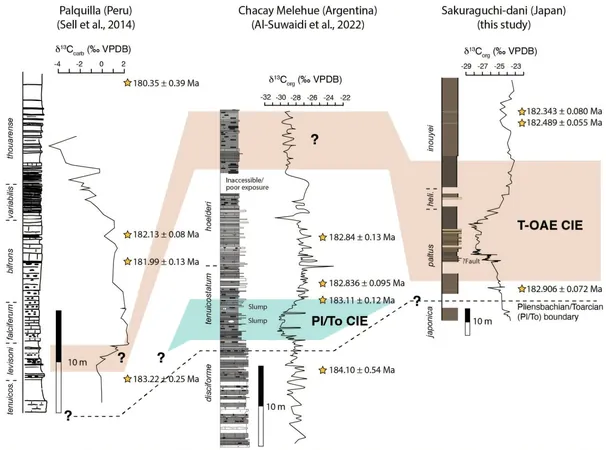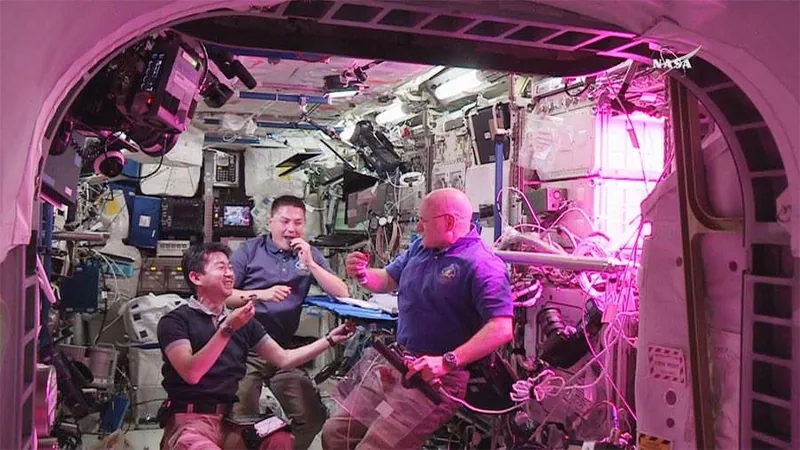
Scientists Uncover Secrets of a Major Warming Event from the Early Jurassic: Surprising Findings Revealed!
2024-10-23
Author: Siti
In a groundbreaking study published in *Geology*, researchers have precisely dated a significant hyperthermal event from the Early Jurassic period, revealing that this critical warming spike—one of the most pronounced in the last 500 million years—lasted only about 300,000 years. This hyperthermal period, known as the Toarcian Oceanic Anoxic Event (T-OAE) or Jenkyns event, took place around 183 million years ago, just 18 million years after the Triassic–Jurassic extinction that wiped out a significant portion of life on Earth.
David Kemp, a geologist from the China University of Geosciences in Wuhan and the lead author of the study, emphasized that while much has been learned about the environmental shifts associated with this warming, the precise timing and duration have remained topics of extensive debate. Knowing the exact timeline of the T-OAE is crucial, not only for understanding the historical climate dynamics but also for providing insights that can help modern climate scientists predict future global warming scenarios.
The T-OAE is characterized by intense global warming, with seawater temperatures spiking by up to 5°C, leading to widespread ocean deoxygenation, increased acidity, and major ecological impacts—primarily affecting marine life. The implications of this research extend beyond paleontology and geology; they are vital for climate scientists aiming to determine how current fossil fuel emissions may impact our planet's climate. For reference, current human activities release approximately 60 times more carbon dioxide than natural volcanic sources.
Utilizing high-precision zircon dating from volcanic ash across layered sedimentary rocks in Japan, Kemp and his team provided compelling evidence that the T-OAE was indeed linked to volcanic activities. As volcanism releases not only magma but also a plethora of gases such as sulfur dioxide and carbon dioxide—greenhouse gases that trap heat—the study suggests that these emissions could have catalyzed the warming event.
Kemp theorized that the interaction of rising magma with organic-rich rocks, such as coal and shale, could have led to enormous releases of carbon dioxide and methane, further exacerbating the warming. This new understanding sheds light on the mechanisms that might have triggered such drastic environmental changes.
Interestingly, their findings challenge previous assumptions that linked the T-OAE to the earlier Karoo Large Igneous Province (LIP) due to the timing of volcanic activities. Instead, their precise dating points to the Ferrar LIP magmatism, coinciding with the T-OAE, suggesting a rapid sequence of carbon release that fueled the warming.
The researchers aim to clarify the pace of these emissions and the resulting environmental consequences, including how quickly seawater oxygen levels dropped and the rate of species extinction and recovery following this hyperthermal event.
The implications of this study not only contribute to our knowledge of the Earth's climatic history but also highlight the urgent need for current climate action in the face of unprecedented levels of carbon emissions due to human activity. As the planet enters what many scientists regard as the sixth mass extinction, understanding past events like the T-OAE could provide critical lessons on resilience and recovery for both ecosystems and human societies facing the impacts of climate change.
Stay tuned as scientists continue to unravel the complexities of our planet's climate history to help navigate our future!

 Brasil (PT)
Brasil (PT)
 Canada (EN)
Canada (EN)
 Chile (ES)
Chile (ES)
 España (ES)
España (ES)
 France (FR)
France (FR)
 Hong Kong (EN)
Hong Kong (EN)
 Italia (IT)
Italia (IT)
 日本 (JA)
日本 (JA)
 Magyarország (HU)
Magyarország (HU)
 Norge (NO)
Norge (NO)
 Polska (PL)
Polska (PL)
 Schweiz (DE)
Schweiz (DE)
 Singapore (EN)
Singapore (EN)
 Sverige (SV)
Sverige (SV)
 Suomi (FI)
Suomi (FI)
 Türkiye (TR)
Türkiye (TR)